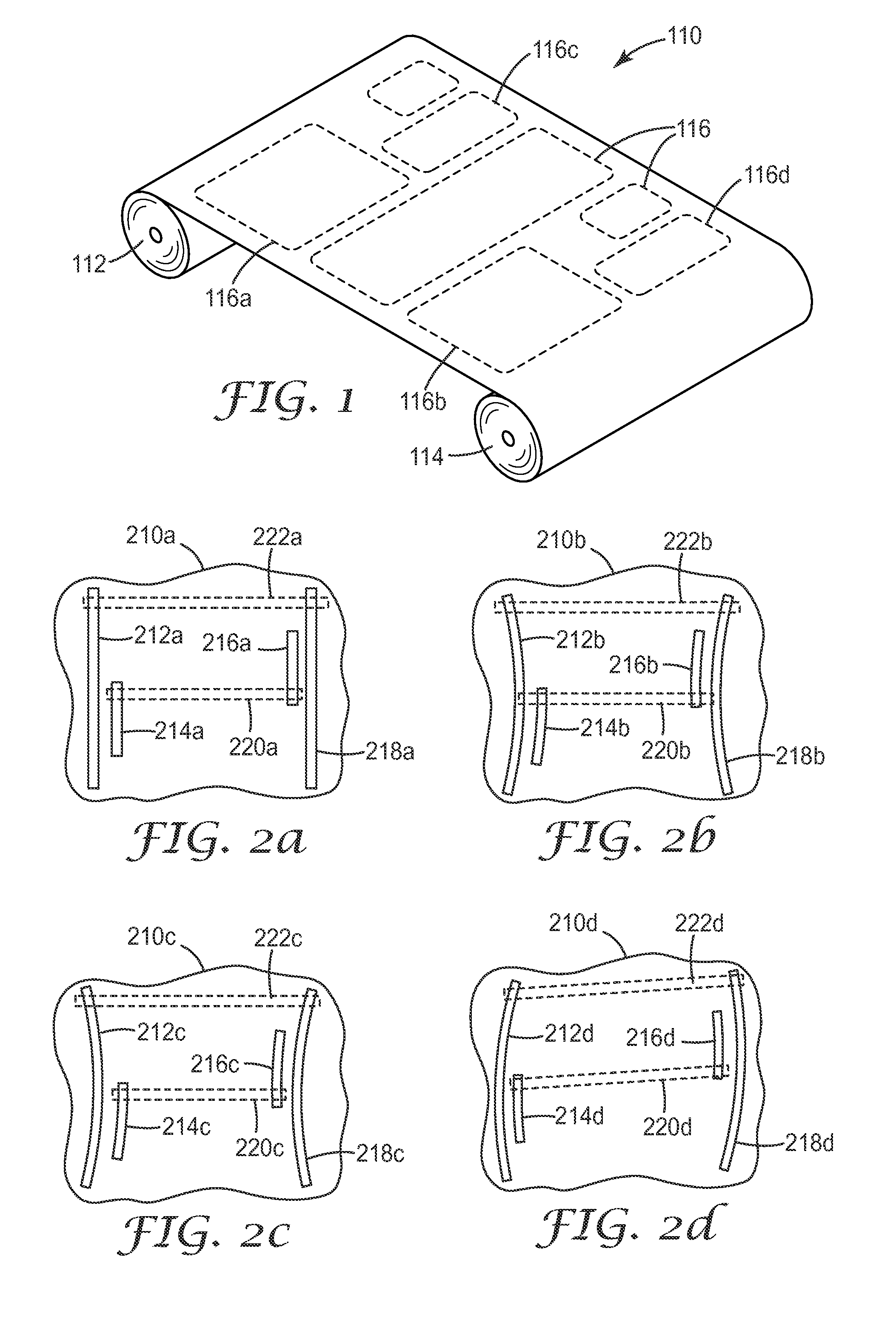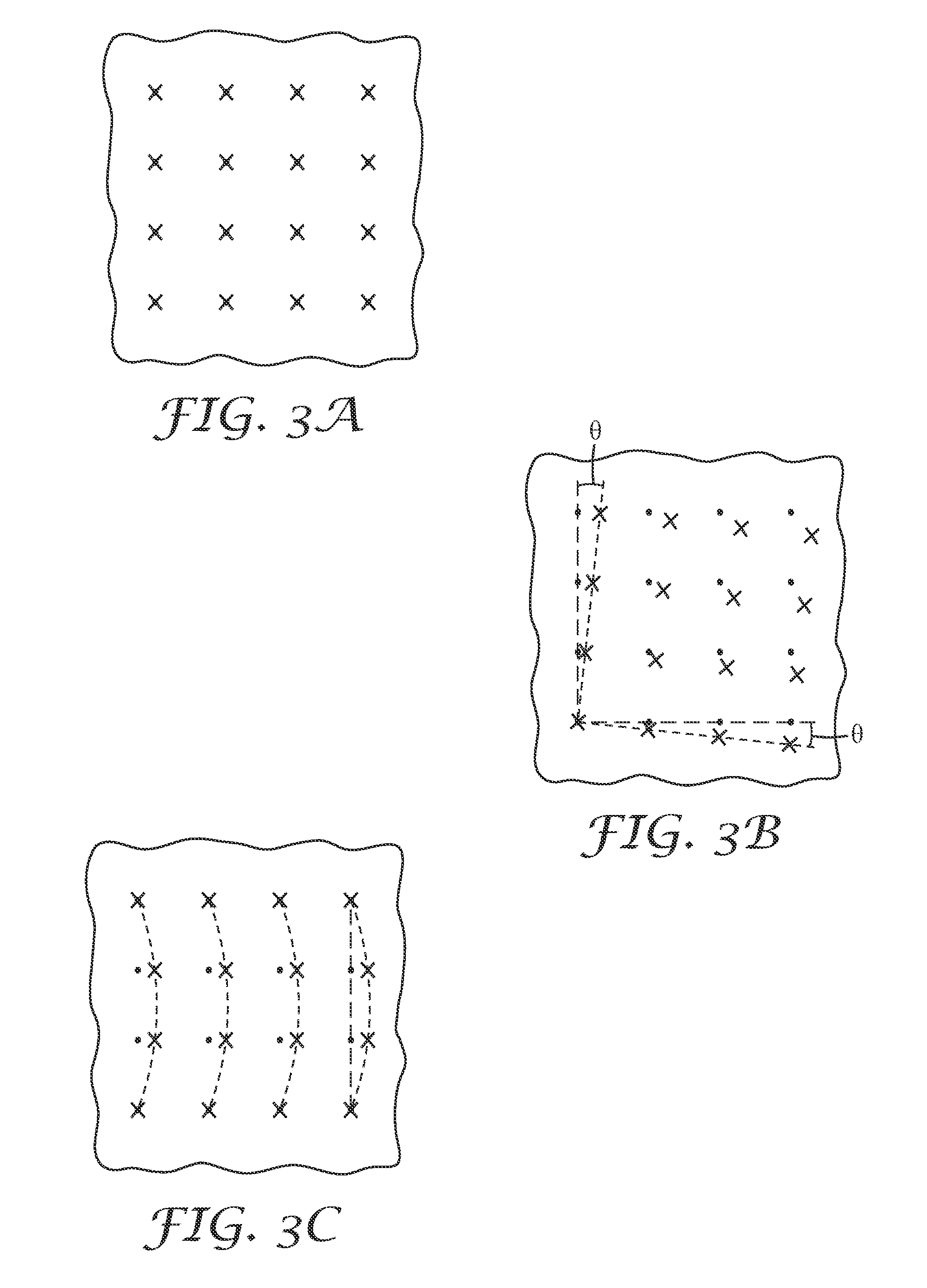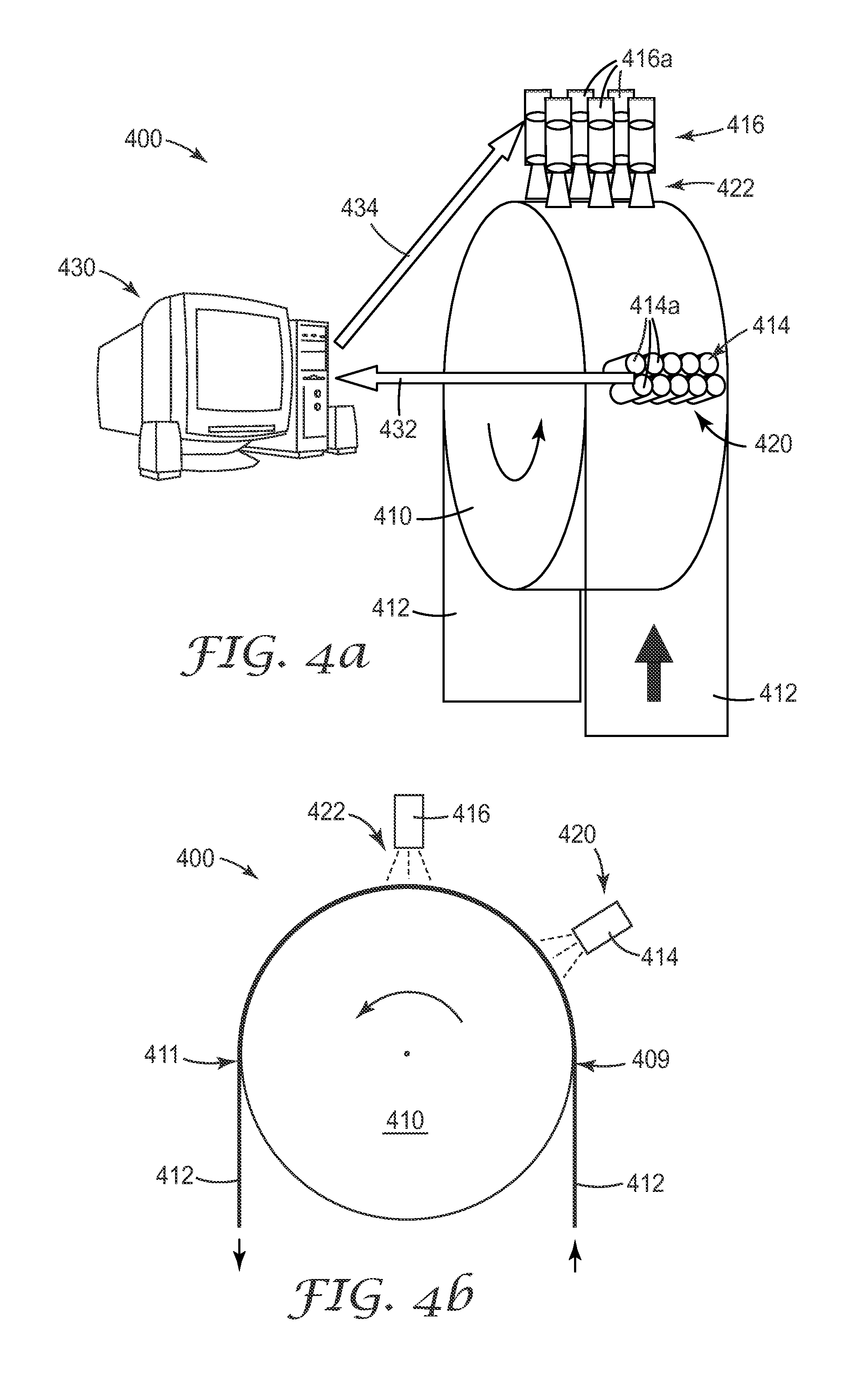Roll-to-roll digital photolithography
a digital photolithography and roll-to-roll technology, applied in the field of photolithography, can solve the problems of distortion of the substrate, unavoidable alignment errors, and limitations of the existing roll-to-roll photolithography system to produce flexible multi-layered circuits
- Summary
- Abstract
- Description
- Claims
- Application Information
AI Technical Summary
Benefits of technology
Problems solved by technology
Method used
Image
Examples
Embodiment Construction
[0032]In FIG. 1 we see in perspective schematic view a roll of flexible multilayered circuit film 110 partially unrolled and distributed between a first roll 112 and a second roll 114. The film 110 has a flexible substrate and a plurality of patterned circuit layers formed thereon. The circuit layers may form a single circuit design that extends from one end of the film 110, on roll 112, to the opposite end of the film 110, on roll 114. More typically, the circuit layers form a plurality of discrete multilayered circuits that are located in distinct areas or zones 116 of the film 110. In some cases, some or all of these discrete circuits can be later separated from each other by converting operations such as cutting the roll of film into corresponding discrete pieces or parts. The discrete circuits in zones 116 may all have nominally the same circuit layout, intended for the same end-use application, or only some may have the same circuit layout, or they may all have different circu...
PUM
| Property | Measurement | Unit |
|---|---|---|
| flexible | aaaaa | aaaaa |
| photosensitive | aaaaa | aaaaa |
| speed | aaaaa | aaaaa |
Abstract
Description
Claims
Application Information
 Login to View More
Login to View More - R&D
- Intellectual Property
- Life Sciences
- Materials
- Tech Scout
- Unparalleled Data Quality
- Higher Quality Content
- 60% Fewer Hallucinations
Browse by: Latest US Patents, China's latest patents, Technical Efficacy Thesaurus, Application Domain, Technology Topic, Popular Technical Reports.
© 2025 PatSnap. All rights reserved.Legal|Privacy policy|Modern Slavery Act Transparency Statement|Sitemap|About US| Contact US: help@patsnap.com



